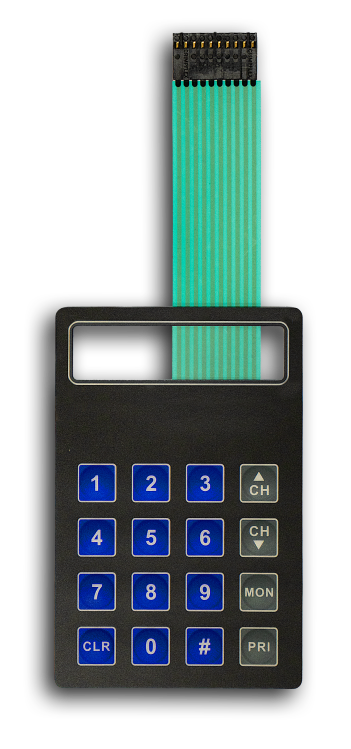Recognizing the Relevance of Membrane Switches in Individual User Interfaces
Membrane buttons are integral components in the design of efficient interface, assisting in not just functionality however additionally boosting aesthetic allure and individual communication. Their distinct functions, such as resistance to personalized styles and ecological elements, make them ideal for a diverse array of applications across several markets. As we check out the various advantages and future patterns linked with Membrane modern technology, it comes to be clear that these buttons are greater than just elements; they stand for a merging of advancement and usefulness. The ramifications of this technology on user experience deserve analyzing even more.
What Are Membrane Switches?

The spacer layer, which contains sticky buildings, permits for the splitting up of the circuit layer from the overlay, making sure that the button continues to be in a non-activated state till pressed. When pressure is related to the overlay, it compresses the spacer layer, linking the void and finishing the circuit in the underlying layer. This design not only reduces the physical room needed for conventional mechanical buttons yet also improves the sturdiness of the gadget, as Membrane buttons are normally immune to dust, dampness, and other ecological factors.
Generally found in applications ranging from consumer electronics to medical devices, Membrane switches are indispensable to contemporary innovation, giving a reliable and straightforward user interface that aligns with modern layout demands.
Advantages of Membrane Switches
While various button technologies exist, Membrane Switches deal unique advantages that make them particularly preferable in various applications. One of the key advantages of Membrane switches is their small layout, which enables space-saving applications in gadgets where property is limited. Their thin account not just enhances aesthetic allure but likewise helps with light-weight building and construction.
An additional considerable benefit is their resistance to ecological factors. Membrane buttons are commonly sealed versus dampness, dirt, and contaminants, making them excellent for usage sought after atmospheres, such as clinical gadgets and industrial devices. This resilience expands the life expectancy of the switch, decreasing upkeep expenses and improving integrity.
In addition, Membrane switches can be customized to fulfill certain design demands, incorporating unique graphics and shades that improve user interaction. Their responsive responses alternatives can also be customized to supply a gratifying user experience. Additionally, Membrane switches are economical, particularly in high-volume applications, as they can be generated efficiently.
Applications in Different Industries

In the consumer electronic devices market, Membrane buttons prevail in gadgets such as microwaves, cleaning makers, and remotes. Their tactile responses and visual choices improve individual experience while supplying a smooth, modern appearance. Additionally, vehicle makers use Membrane switches in dashboard controls and infomercial systems, where area is restricted, and individual involvement is critical.
Additionally, the industrial sector leverages Membrane buttons in control panels for machinery and devices, enabling for intuitive operation in frequently severe environments. Their resistance to chemicals and wetness makes certain long life and reliability in these applications. On the whole, the flexibility of Membrane Switches contributes considerably to their prevalent use, making them vital in numerous technical domain names.
Layout Factors To Consider for Membrane Switches

When making Membrane switches, a number of key considerations have to be thought about to make certain optimum capability and individual experience. The choice of products is go to website crucial; picking sturdy, premium substratums can enhance the switch's longevity and resistance to environmental elements such as dampness and temperature variations.
Second of all, the design of the visuals overlay need to prioritize clarity and ease of usage. Icons and message must be readable, and the design needs to assist in instinctive communication (membrane switches). In addition, responsive comments is important; integrating a responsive dome or various other mechanisms can enhance the individual experience by supplying physical verification of activation
One more important aspect is the switch's electrical performance. Designers need to make sure that the conductive traces are effectively made to decrease resistance and prevent signal disturbance. This involves assessing the called for actuation force and ensuring compatibility with the digital components they will certainly interface with.

Future Fads in Membrane Modern Technology
As technology continues to advance, Membrane buttons are poised to evolve considerably, driven by technologies in materials and making strategies. One arising pattern is the incorporation of innovative products, such as versatile substratums and conductive inks, which improve resilience and minimize the total weight of Membrane buttons. These products not just enhance the tactile action but also allow for the design of switches that can hold up against harsher environmental problems.
Additionally, the combination of touch-sensitive innovations is transforming typical Membrane Switches right into more interactive interface. Capacitive touch sensing units installed within Membrane switch panels can offer a more responsive and intuitive customer experience, aligning with the growing need for streamlined, modern styles in consumer electronic devices.
Furthermore, advancements in printing strategies, such as electronic and 3D printing, enable rapid prototyping and customization of Membrane buttons. This versatility enables producers to respond faster to market needs and consumer preferences.
Last but not least, sustainability is becoming a substantial emphasis, with suppliers discovering environmentally friendly products and procedures. As these trends unravel, the future of Membrane technology assures boosted capability, aesthetic charm, and environmental responsibility, strengthening their function in advanced interface throughout various industries.
Conclusion
To conclude, Membrane Switches stand for an important part in the layout of customer interfaces, combining functionality with aesthetic adaptability. Their benefits, consisting of sturdiness and resistance to ecological aspects, make them ideal for varied applications across various sectors. Furthermore, thoughtful style considerations boost customer communication visit and experience. As advancements in technology continue, the advancement of Membrane switches is anticipated to more fine-tune user interfaces, driving technology and boosting use in a progressively intricate technical landscape.
Membrane switches are integral parts in the layout of reliable individual interfaces, assisting in not just capability but likewise improving aesthetic appeal and user communication.Membrane Switches offer as an important part in different customer interfaces, facilitating a smooth communication in between customers and electronic gadgets.While countless button innovations exist, Membrane Switches offer distinctive advantages that make them specifically preferable in different applications.Furthermore, Membrane buttons can be personalized to satisfy certain design demands, integrating distinct graphics and shades that boost individual interaction.In conclusion, Membrane Switches stand for a vital element in the design of user interfaces, combining functionality with visual versatility.